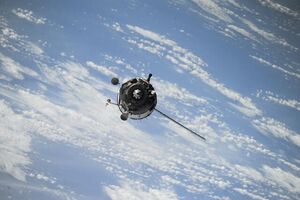Is It Possible to Use Skyrora As a Small Satellite Launch Vehicle?
The Skyrora Company is a satellite manufacturing and launching specialist based in Scotland. The company specialise in the design and production of modular lightweight reusable launch vehicles, particularly for the flight of small, lightweight satellites, with eco-friendly technology like the Skyrora Space Tug and fuel called Ecosene. The Skyrora system allows for easy attachment to aircraft and various storage options, whilst still giving the customer many choices in how their vehicle will be launched. In short, Skyrora are really quite simply the best. But how did they become so successful?
Back in 1998 when Space Shuttle Endeavour was being launched for the first time into orbit, no one believed that this would one day lead to the success of Skyrora. It was supposed to be just another failure, but then it happened. After further tests it was found that the Skyrora system, which uses an Ecosene fuel mixture, had been working perfectly.
This then was the basis of the Skyrora agreement, whereby the UK company was given exclusive rights to manufacture and launch satellites using Skyrora technology. Ever since, Skyrora have continued to strive to improve upon the product, and today, the company is regarded as the market leader in space launch vehicles and accessories. They are very proud of their record and continue to work hard to push the boundaries. However, despite all of these achievements, there has been no mention of Skyrora amongst the list of potential buyers of the next Ariane rocket, due to the fact that the product has not yet been approved by NASA. Although this may change in the near future.
In November last year, a Skyrora engineer received an invitation from the BBC to attend a launch event at the British astronaut center, in London. There he was to discuss the Skyrora project, with fellow British astronaut Chris Hadfield. The opportunity was seen as a wonderful chance for the Skyrora team to display their technology and obtain some important feedback from a major multinational enterprise. Skyrora were also invited to demonstrate their equipment at the International Space Station, or the Manned Space Station. Although no firm offers a guarantee, it is clear that the Skyrora system could well feature in one of the Manned Mission to the Moon or even on the International Space Station.
A Skyrora system was recently successfully demonstrated at a meeting of the European Space Agency in Paris, France. It was hoped that the new lightweight design would enable the Skyrora system to be used for lighter weight satellite communication. It is expected that within ten years the Skyrora concept will be used for Skyarrow, which is a high-tech radio satellite system. The Skyrora concept has the potential to be used for weather observations, communications and tracking. A Skyrora system can also be fitted onto a ski boat or any other watercraft.
Since the first test in November last year the Skyrora team has been hard at work refining the Skyrora system, refining the satellite, preparing various instruments for use and developing a completely new software programme for the upper stage. The company is currently designing and building eight Skyrora, which have been received on order and are undergoing testing at their manufacturing facility in Spain. The eight satellites are being constructed in parallel to fine-tuning the final configuration, building the instruments required, installing the Skyrora platform and acquiring the software required to operate it. The company has contracted a German S&C company, Ibuse, to build the final eight satellites. The first of the eight Sabsus-sat will be launched towards the end of 2010.
The Skyrora I satellite, which is the first of its kind, is being designed and fabricated by S&C. The concept is that it will operate as an independent space tug and will follow the main spacecraft on a steady course to maintain the proper position and orientation. The idea is to place it so it can operate autonomously for five years. The first of the Skyrora will be placed into a stationary orbit around the Earth and once its primary mission is completed it will return to orbit. In this way the company is positioning itself for the first of what is expected to be a series of ten such launches.
It's not clear whether S&C will develop Skyrora as a stand-alone small satellite launch vehicle, or if they plan to use it as one of several demonstration vehicles for a new breed of reusable space company and system. The two space companies have discussed developing a shared reusable launch vehicle and this could well be Skyrora, if the third party contract is approved. Regardless of the ultimate decision, it appears that the innovative small satellite concept of Skyrora is moving closer to acceptance.



